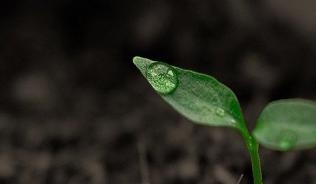The current Zeitgeist of sustainability has pushed the role of the ‘ethical designer’ into the forefront of industry. Design is about improving the life of the end user. The decisions we make in the early stages of the design process will affect the way people interact with the world around them, so responsibility for making ethical decisions as this stage is paramount.
A rural Irish upbringing where everything possible was recycled, re-purposed, composted, repaired or grown has meant that issues of sustainability were ingrained in my thought processes from a very early age. However, society is suffering from a general apathy towards the provenance and manufacture of the items we surround ourselves with, and more importantly how they are disposed of after they have outlived their usefulness. News stories such as the recent factory collapse in Bangledesh, serve as a wake up call.
A few years ago I began researching methods to encourage people to engage with their surroundings in a different way, to think more about the long-term effects of what they consume and try to develop betters methods of sustaining a social and environmental ecology.
During my time studying at Chelsea College of Art and Design in 2012 I undertook a workshop run by the Textiles Environment Design research team based at the faculty. I was exploring how their TED10 guidelines for sustainable design could be integrated into my own practice as a graphic designer. They are:
- Design to minimise waste
- Design for recycling/up-cycling
- Design to reduce chemical impact
- Design to reduce energy and water use
- Design that explores better/cleaner technologies
- Design that looks at models from nature and history
- Design for ethical production
- Design to replace the need to consume
- Design to de-materialise and develop systems and services
- Design activism
Whilst originally created for the textiles industry, the guidelines can easily be applied to any design related discipline. Some of them were already intuitively incorporated into our everyday processes. Simple decisions like recycled paper stock and low environmental impact printing techniques make a huge difference to the sustainability of a project. The choice of a local printing company will not only reduce the carbon footprint of the job but aides the economic sustainability of local economies.
In the fashion industry influential names such as Vivienne Westwood are fighting against the throwaway/disposable culture for cheap short-lived clothing, and graphic design is following suit. Instead of the superficial world of glossy ads enticing people to consume, consume, consume, there is a concerted effort being made to encourage a greater awareness of the environment around us and to environmentally aware alternatives more accessible. Projects such as the Future Bristol website - which grew from the PhD research of Dr Rose Bailey, and was part-funded by the IES - is a great example of how designers can work alongside scientists and academics exploring the ideas behind sustainability and communicate their findings to the general public in a way that is easily understood. The IES has also been scrutinising the way in which it uses design to communicate scientific ideas. You may have seen the results of this process in our journal and our analysis pages.
There is a clear opportunity and need for more designers to take these issues on board, to think harder about the long- and short-term effects of what they are creating. The transition into a culture of sustainability will be most effective if it is a consideration from day one of the design process.





